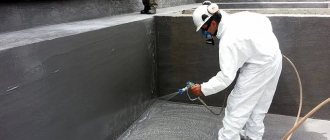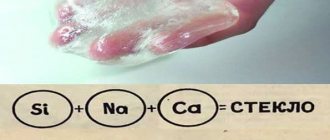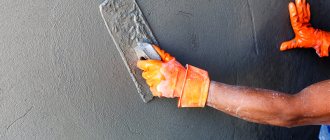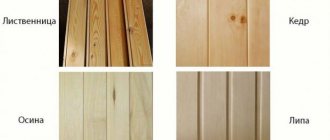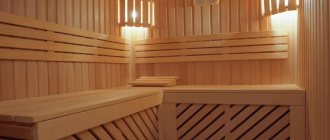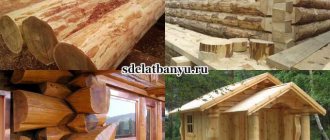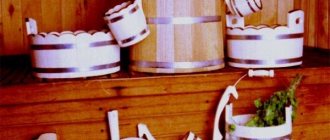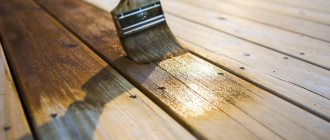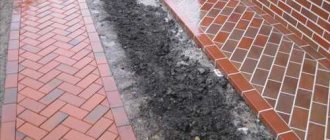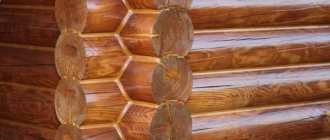Korovin Sergey Dmitrievich
Master of Architecture, graduated from Samara State University of Architecture and Civil Engineering. 11 years of experience in design and construction.
Processing concrete and wood products with liquid glass has been used for quite some time. This substance is added to cement, which speeds up the process of setting the mixture; it is used for waterproofing basements, for treating swimming pools and other hydraulic structures. Liquid glass in its original state resembles transparent or whitish crystals obtained by melting soda and silicon dioxide in certain proportions under pressure. This material was invented in the 19th century and is still actively used in construction and renovation work due to its unique properties.
For construction work, crystals are diluted with water, but most often the material is supplied in industrial packaging. When exposed to open air, LC dries instantly, forming a protective film, which allows it to be used for impregnation of products and structures in order to provide protection from moisture, fire and rotting.
There are several types of liquid glass. They are divided depending on the main substance used in the mixture.
Sodium
The formation based on sodium salts is characterized by a viscous structure, high strength and penetrating ability. It perfectly resists open fire and high temperatures, and the composition is also able to retain its shape even when the base on which it was applied is deformed.
Potassium
This material contains potassium salts. The structure of the mixture is loose, the composition has increased hygroscopicity, and forms a matte surface. Potassium compounds resist excessive heat and deformation well.
Lithium
It is used to provide the treated surface with protection from thermal effects. Produced in small batches. For some work, combined mixtures are used.
Characteristics
ZhS is a material of a viscous, viscous consistency, which dries quickly in air and forms a monolithic, durable, water-impervious base.
Liquid glass, sodium and potassium, have the following characteristics:
- Prevents water from penetrating through the surface treated with the solution.
- Protects wooden and concrete surfaces from the penetration of fungus and pathogens.
- Prevents the accumulation of static voltage.
- Protects the treated surface from fire.
- Protects the base impregnated with the solution from the effects of acidic compounds.
- Helps accelerate the drying process and strength gain of cement mortars.
Advantages and disadvantages
When working with RC in construction or during repairs, the following advantages are revealed:
- this material helps to quickly repair small cracks in concrete products and wood building structures;
- coating with liquid glass makes it possible to obtain a durable film that helps waterproof any surface;
- material consumption is low, while the cost of liquid glass is affordable for most categories of the population, so it can be used for work at home;
- if used correctly, the coating service life will be at least five years;
- Liquid glass for waterproofing can be used in places with unstable humidity levels.
There are also negative features of JS. The disadvantages include:
- this material is not used for processing brick buildings;
- ZhS cannot be the only material for obtaining reliable waterproofing; it is usually used together with other materials;
- for processing structures and products of reinforced concrete, it is advisable to have certain skills, since such solutions instantly dry and harden;
- To obtain a better coating and protect the base, it is necessary to apply a primer before the LC.
The need to protect the tree
The tree is negatively affected by:
- precipitation;
- air humidity;
- decay processes;
- insect pests;
- fire;
- aggressive chemicals.
By treating wood with any protective agent, you can extend its service life . Chemicals are used to fill the pores, creating a coating. To protect against parasites and pests, antiseptics are used, and fire retardants are used to increase the fire resistance of wood. Waterproofing is ensured by treating the surface with water repellents.
Organosilicate materials, including liquid glass, are used as means to ensure the hydrophobic properties of the internal surfaces of elements.
Basic properties of liquid glass
In construction, glass is used based on an aqueous concentrated alkaline solution of sodium silicates. Also includes:
- oxides of sodium, silicon;
- silicic acid in colloidal form;
- various chemical additives.
There is glass based on potassium silicate. It is mainly used for the production of welding electrodes.
Organosilicate materials are used for waterproofing materials. Processing and impregnation of building structures with putties and plasters based on liquid glass provides anti-corrosion properties.
Liquid glass is added to lime and cement mortars to increase acid resistance, insulation, and strength characteristics . The material is also used when laying sewer lines as a sealing waterproof putty for waterproofing joints. Based on organosilicate materials, primers, putties, facade paints, sealing additives for concrete, and plasters are made. Liquid glass is used in metallurgy, the petrochemical industry for the production of household and automotive chemicals, and silicate glue.
Feasibility of wood processing
glass, for this purpose it is advisable to use enamels (in particular, PF-115), enamels based on chlorosulfonated polyethylene (CP) and urethane-alkyd
Organosilicate materials are used to treat the internal surfaces of wood structures and provide protection from moisture. For these purposes, enamels are used: alkyd (PF-115), chlorosulfonated polyethylene (CP), urethane-alkyd (UR-49). The thickness of the applied coating must be at least 100 microns.
To protect the outer surface of wood from precipitation, perchlorovinyl (type HV) and urethane-alkyd enamels (type URF) are suitable.
It is advisable to use liquid glass on those structures that will not be painted in the future: the adhesive properties of the treated wood deteriorate. Liquid glass makes the surface smooth, the glassy film imparts water-repellent properties.
It is necessary to impregnate wooden structures in cases where the elements are not directly exposed to moisture.
Features of working with liquid glass
Waterproofing of wood is ensured if the thickness of the organosilicate coating is at least 100 microns. For application you need:
- Wear a cotton robe, rubber gloves, and safety glasses.
- Clean and level the wooden surface.
- Dilute liquid glass with clean tap water to the consistency of liquid jelly. The ratio is 1:2 or 1:3, depending on the initial viscosity of the glass.
- Brushes and rollers can be used as application media. Surface treatment is carried out at temperatures from -20 °C to +40 °C. The number of applied layers is at least 2, and the second layer should be applied after the first has completely dried.
Working with liquid glass requires compliance with safety precautions. Possible burns to the eyes, skin, and irritation of the upper respiratory tract.
Application areas of liquid glass
Housing systems are used in general construction work and for solving everyday problems. It is usually used to provide the following types of work:
- to ensure waterproofing of swimming pools, concrete screeds, foundations, basements, sewer pipes and wells;
- to enhance the refractory properties of mortars for masonry stoves;
- in order to protect concrete and wood products from rotting and mold formation;
- used as an additive in coloring compositions to obtain increased strength and fire-resistant characteristics;
- for gluing PVC plates and linoleum;
- for clogging open pores of damaged trees;
- for the purpose of restoring glass, wood and plastic products;
- for processing the car body;
- for organizing self-leveling floors.
Preparation of solutions with liquid glass
It is advisable to purchase ready-made impregnations and mixtures that are designed for specific tasks, but mixing the components yourself will cost less, so the necessary solutions are often prepared at the construction site.
Proportions
To prepare a special solution using this substance for various purposes, certain proportions must be observed. How much of each substance to add to a particular solution depends on the application of the mixture.
Compositions for painting
The peculiarity of the effect of silicate compounds on pigments limits the number of color options. To prepare paints, potassium silicate is used, which, unlike sodium silicate, allows you to obtain a more uniform mixture.
Such compositions are sold ready-made (you only need to mix two components).
Primer compositions
To obtain a high-quality primer for concrete, you need to combine cement and glass in a ratio of 1 to 1, which can significantly strengthen the base. If the surface of the screed is planned to be covered with tiles, the solution is made lighter.
Surface impregnation
To increase the service life of structures and individual products, use an aqueous solution of liquid glass in a ratio of 1:5. Apply impregnation using a brush, roller or spray gun. Individual small elements can be completely immersed in the prepared solution.
Waterproofing composition
To protect concrete surfaces from moisture, prepare a solution from equal parts of sand, cement and glass. Add water until a plastic consistency is obtained. This mixture can be used to treat hydraulic structures.
Fire protection composition
Strengthening the JS of masonry mortar helps to increase the fire protection effect. Recommended composition of masonry mortar: cement and sand 1:3, water is added until a plastic formation is formed, glass - 20% of the total mass of the mixture. JS is added after preparing the CPR.
Antiseptic composition
To avoid damage to structures by mold, fungi and rot, it is recommended to treat surfaces with an impregnation consisting of equal parts of water and liquid iron. Both reinforced concrete and wooden structures are treated with this impregnation.
Repair composition
To eliminate cracks, seal joints between slabs and when pouring screed, it is necessary to combine the following ingredients: 1 part ZhS, 1 cement and 3 parts sand. The mixture must be prepared to a sufficiently thick consistency so that it does not flow out of the cracks during work.
How to use liquid glass when processing wood
Edged lumber with natural moisture, having a moisture content of less than 22%, is processed; work is carried out at a positive temperature. To calculate the required amount of solution, a consumption of 300 g per square meter is taken. Work order:
- Liquid glass is diluted with tap water in a ratio of 1:2 or 1:3 depending on the required concentration and stirred thoroughly.
- The surface is cleaned of loose fibers, dust is removed, and in order to minimize material consumption, it is advisable to prime large cracks.
- The composition is applied to a dry surface with a flat brush with synthetic bristles or a felt roller, the layer is applied along the fibers.
- The surface is covered in 3-4 layers, the next layer is applied 1-2 hours after the previous one has dried, small parts can be treated by dipping.
- The resulting protective layer is not processed or polished.
Sodium silicate is environmentally friendly, but if it comes into contact with the skin or eyes it can cause irritation and is washed off with running water. When processing wood, precautions must be taken; it is advisable to use protective clothing and gloves.
Methods of applying material
When working with liquid materials, it is necessary to use means of physical protection for the worker, for which they use protective suits and protective masks. Contact of the solution with the eyes can cause significant harm to health.
It is recommended to apply liquid glass with your own hands using a roller or brush. The final rise of the solution occurs within about half an hour, then the next layer is applied.
Repair mortars containing cement are applied with a spatula, but when performing work, one must not forget about the immediate setting of the mixture (usually within half an hour), so the volume of a single batch must be accurately calculated.
Waterproofing with liquid glass
Waterproofing mixtures using JS make it possible to treat any structures, including concrete and wood, in established areas with humidity exceeding the norm.
Foundation
To protect the foundation from destruction in a humid environment, it is necessary to apply liquid glass for concrete. The instructions for use indicate that for maximum protection this operation should be performed twice. After application, the layer must dry completely, then apply the next one. After the concrete base is impregnated with glass, the insulation is reinforced with other technical materials.
To eliminate cracks and mask the joining seams, prepare a repair composition in the following ratio: cement - 1 kg, water 750 ml, ZhS - 50 grams. To ensure better protection of the concrete base, it is recommended to use ZhS in the form of an additive in a volume of 5% of the total mass of the mixture.
swimming pool
To eliminate leaks in the bathtub of a structure, it is necessary to treat the surface of the concrete. The solution is evenly applied to the walls and floor of the structure. After one layer has dried, apply the next one. To reliably protect the structure, it is recommended to impregnate it three times.
From exposure to groundwater
Special concrete, which contains LC, can limit the flow of groundwater.
Basement
This important structure in the house and protecting it from leaks is the main condition for maintaining a favorable climate in the apartment and in the interior. Typically, owners are faced with the problem of cracks and poor waterproofing of joints. To get rid of the problem you will need:
- Clean cracks and seams from foreign objects and dust;
- Prepare a repair mixture in the following ratio: cement – 20 parts, liquid glass – 1 part. Maximum plasticity of the mixture should be achieved, for which its consistency is controlled by the volume of water;
- Cracks are sealed with a repair compound;
- Level the repair site by plastering it with the same mixture;
- The repair area is coated with water using a brush;
- After 24 hours, a layer of GS is applied.
When performing waterproofing work, it is necessary to remember the chemical reactions that occur with mixtures in which liquid iron is present. Due to the rapid hardening of the solution, in order to save material, it is recommended to prepare small volumes for work.
What is the material
Silicate glue or, as it is otherwise called, liquid glass is an aqueous solution of silicate salts. Depending on the main component there are:
- sodium liquid glass, characterized by a high degree of adhesiveness, fire resistance, antiseptic and waterproofing properties;
- potassium, which is immune to atmospheric influences and acid attack.
Soda glass is used to accelerate the hardening process of cement mixtures due to the chemical reaction that occurs.
Liquid glass has become widespread as a construction and finishing material due to its properties:
- Hydrophobic (water-repellent). Thanks to this property, liquid glass is used to treat surfaces exposed to prolonged contact with liquid, including wood products. As a result of impregnation, they will not be subject to swelling and deformation.
- Antiseptic. This property allows the use of silicate glue for protective impregnation of walls against such negative manifestations as mold and mildew.
- Fireproof. Impregnating floors and walls with liquid glass increases the fire safety of the room.
- Antistatic. The material eliminates electrification and does not provoke the occurrence of static electricity.
- Acid-resistant. Impregnation with a silicate solution helps protect the surface from exposure to chemicals.
- Eco-friendly. This material does not emit substances harmful to the human body.
The need to protect wood
Timber used in frame buildings and roofing of buildings is characterized by hygroscopicity. They absorb moisture from the air, become damp, mold and gradually lose their strength. The destructiveness of the external environment on wooden structures depends on:
- from increased moisture content in environmental conditions;
- on the amount and volume of precipitation;
- on the rate of decay;
- from the likelihood of fire;
- from exposure to chemicals;
- from wood-boring insects.
The use of liquid glass prevents the adverse effects of dampness and other factors, and extends the service life of wooden structures. It is advisable to use the coating composition in those areas that are most exposed to moisture:
- in basements and office premises;
- in places where condensation accumulates from heating and ventilation systems;
- in attics where moisture penetrates during rain;
- on floor beams regularly exposed to precipitation.
Liquid glass is not absorbed into wood. When the product is applied to the surface, a protective layer is formed, which serves to waterproof the building material and disinfect it as an antiseptic. This eliminates the likelihood of pathogenic microflora developing in the wood structure and moisture getting inside it.
Application for waterproofing
Due to its chemical composition, liquid glass does an excellent job of filling porous materials:
When the surface is treated with a silicate composition, its hydrophobicity and strength increase. Therefore, liquid glass has become particularly widespread in the processing of foundations, walls and floors of basements, wells and swimming pools. To produce a primer with hydrophobic properties, it is necessary to combine water, cement and ironclad in equal proportions.
The surface to be treated must first be prepared: leveled and cleaned of dirt. When processing wood, it is desirable to preserve its natural unevenness (this will ensure better adhesion of materials). If you had to wet the surface during cleaning, then it must be allowed to dry before processing. The thickness of the waterproofing mortar layer must be at least 3 mm.
Silicate solution is also used when covering floors in a bathhouse or bathroom. To create a hydrophilic coating of a large area, for example, to cover a floor or walls, you can use a spray gun, roller or brush.
Application to increase the fire resistance of materials
The fire resistance of liquid glass allows it to be used for:
- masonry of fireplaces, chimneys and stoves;
- production of heat-resistant concrete and cement, as well as fire-resistant paints and varnishes;
- impregnation of wood to give it fire-retardant properties;
- covering elements of metal structures.
To prepare a fireproof silicate mortar, 3 parts sand, 1 part cement and 1 part liquid glass are required. Such a mixture quickly hardens as a result of the chemical reaction that occurs, so you can first make the necessary structure from ordinary mortar, and then apply an external coating of the concrete with a fire-resistant layer.
To give the surface fire-resistant properties, you can coat wood or concrete only with liquid glass from a spray gun, using it as a primer. Walls can also be impregnated either with a separate solution of silicates or in the form of a cement screed for the floor.
Pouring the flooring
In bathrooms, showers, bath rooms and indoor swimming pools, which are characterized by constant humidity and wet floors, flooring can be made using liquid glass. To fill the floor you need:
- if wooden floors are laid, then first make a concrete screed;
- pour the silicate solution onto the dry surface in equal portions;
- level the glue layer with a wide spatula;
- carry out final leveling of the layer with a thickness of 3-5 mm using a squeegee;
- After the silicate layer has dried, apply a finishing varnish (polyurethane or epoxy is better).
It is worth considering that it is impossible to decorate a floor already covered with liquid glass. When pouring a concrete screed, the floor surface will have a corresponding “concrete” color and texture. Decorating the floor must be done before applying a layer of liquid glass. Alternatively, you can paint the concrete. At the same time, it is recommended to add a small amount of silicate to paints and varnishes to improve their adhesion to concrete. After the paint has dried, you can fill the floor according to the above algorithm.
By the way, taking into account the non-toxicity of the material, its heat and water resistance, it can be used to treat a steam room, which is most often made of wood and can be subject to deformation with constant exposure to moist hot air without proper care.
Material characteristics
What is liquid glass? In scientific terms, this is a solution of sodium silicate and potassium silicate, that is, the building material in question contains the same components as ordinary glass. Another name for this material is silicate glue, which makes its use immediately clear.
Liquid glass has very high adhesive properties and is characterized by thermal conductivity - this material is often used in thermal insulation work. The insulation, in the manufacturing process of which liquid glass was used, can withstand temperatures of up to 1200 degrees Celsius!
Characteristics of liquid glass
The second name of the substance is silicate glue. It is an aqueous solution of sodium or potassium silicates. During electrode coating, this composition is replaced by lithium silicates. The material was first obtained back in the 19th century. Now there are several ways to manufacture a product industrially. Its parameters depend on the ratio of components that do not affect quality. However, for some applications, a certain composition is preferred.
Liquid glass, which has an alkaline reaction, dissolves in water. Acidity ranges from 10 to 13. The saturation and consistency of the composition is determined by its concentration, temperature and ratio of elements. Sodium-based material turns into a liquid state at temperatures above 600 degrees. The thickened film of sodium silicate can be dissolved by water, and under the influence of humidity and carbon dioxide contained in the air, it loses its properties.
Thanks to its waterproofing, thermal insulation and fire retardant properties, the product is used in numerous areas:
- production of building materials resistant to acids and water;
- special impregnation of fabric surfaces;
- production of fire-resistant paint;
- strengthening loose soils.
Silicate glue is used to glue cellulose materials. It is used in the production of electrodes and in the drilling process.
Important! According to the instructions, the product is incompatible with organic substances, except sugars, alcohol and urea.
Application of liquid glass
Liquid glass has found application in various fields of human activity, so it is impossible to quickly and compactly list all the aspects of its application. But there are areas that definitely need to be mentioned:
Liquid glass is used for waterproofing. Both the walls and the foundation are impregnated with this material - liquid glass turns such surfaces into ones that are not susceptible to moisture and changes in air temperature. It is advisable to use this material when insulating the walls of a house from the inside. Liquid glass is an excellent antiseptic.
You can often see fungus and mold on the walls and ceilings of residential premises, and indeed on various surfaces in general - these are the consequences of exposure to moisture. To get rid of this unpleasant and harmful phenomenon to human health, you need to use various means to destroy fungal colonies. If you treat a surface already damaged by mold/fungus with liquid glass, they will simply disappear.
For this purpose, liquid glass is used to prepare walls for wallpapering. Liquid glass has excellent adhesion. This means that it adheres perfectly to any surface. Using this material, you can glue completely different materials - from cardboard to porcelain. Liquid glass significantly increases the moisture resistance and fire safety of wood, paper and ceramics - they are specially coated with this product.
If we consider liquid glass exclusively from the construction side, then many mixtures can be made with this material. The material has found application in the following processes:
Primer with liquid glass.
Used for surface treatment before painting or wallpapering. Naturally, the option under consideration cannot be used in its pure form - it is simply mixed with cement in the following proportion: the same amount of liquid glass is taken for 10 kg of cement. First you need to mix cement with water, and then the resulting solution is poured into liquid glass. A solution for waterproofing work.
It is necessary to mix cement, sand and the material in question in equal proportions. The resulting mixture can be used for waterproofing work of any complexity. Fireproof solution. First, a cement-sand mixture is prepared - for 1 part of cement, take 3 parts of sifted sand.
Then a little liquid glass is added to the resulting mixture (about 20% of the total volume of the dry mixture). Use fireproof mortar with liquid glass for laying fireplaces and stoves. Protective agent against fungus and mold. It is necessary to dilute the material in question in water (proportions 1:1).
The resulting solution is used as an antiseptic for treating wooden, stone, plastered and other surfaces. Impregnation for processing materials during preparatory work. You will need to dilute 400 g of liquid glass in a liter of water and lubricate the surface two or three times. But keep in mind: each layer must be completely dry and only then can you begin to apply the next layer.
Liquid glass. How and why?
Liquid glass is a new method of processing wood slabs, which is most often used in the manufacture of tables and countertops.
The result of this process is an incredibly beautiful glass-encased slab. In addition, we gain additional protective properties of wood - it becomes even more resistant to external influences, has excellent thermal insulation, strength and minimal expansion when exposed to temperatures.
Liquid glass is mainly used in construction and repair. It consists of a concentrated aqueous alkaline solution of sodium silicates, sodium oxides, silicon oxides, silicic acid and various chemical additives.
The process of processing a slab with liquid glass consists of the following steps:
- Preparation for work (gloves, glasses, work clothes, respirator)
- Cleaning and leveling the slab surface
- Diluting liquid glass with water to the consistency of jelly. You can add dye to give the glass any color.
- Applying liquid glass to the treated slab surface with a brush or roller
no more than 2 layers can be applied . Subsequent painting is impractical , since glass is a slippery, water-repellent surface.
The result of this work will be a slab with a shiny glass surface. Let it dry completely before continuing.
Your liquid glass slab is ready!
If you liked the article and are interested in the idea of making furniture from slab yourself or with the help of a craftsman, then we will be happy to help you select the ideal elm slab. Elm is a wood that is especially valued in the world of interiors due to its durability, moisture resistance and incredible texture!
Go to the catalog of elm slabs and cuts
Liquid glass and concrete
Liquid glass for concrete is an improvement in the quality characteristics of the latter material. It is recommended to add this option to concrete for those structures that will be constantly exposed to moisture - this technique will extend the life of the concrete product and prevent its destruction. Do not forget that liquid glass has antiseptic properties and, when added to concrete, it makes the latter resistant to the harmful effects of fungus and mold.
Important: liquid glass hardens very quickly (almost instantly), so experienced builders suggest not adding it to the concrete solution, but impregnating ready-made structures.
If a concrete structure is intended for painting, then liquid glass cannot be used to improve the qualities of the base material. When dried, the material in question forms a thin protective film on the surface of any object/product - it will be impossible to apply the finishing material.
Processing wood with liquid glass
In terms of the effectiveness of protecting wood from moisture, sodium silicate is superior to paints and varnishes, and is cheaper than almost all paints and varnishes. Liquid glass is used to process wood exposed to intense negative factors, these can be:
- Framing crowns, floor joists, wooden grillage, roof structural elements,
- Wooden piles, walls of basements and cellars,
- Verandas, terraces and gazebos,
- Places for laying sewer and water pipes.
After application to the surface, liquid glass fills unevenness and cracks and forms a film on the surface with a thickness of at least 100 microns. The coating is resistant to atmospheric influences and retains its protective properties for 8-10 years, preventing the development of microorganisms. Treatment of lumber with sodium silicate significantly extends the life of the elements and structures of wooden buildings.
The following are noted as disadvantages:
- After processing, the wood changes its natural color, acquires an unattractive dark gray shade with a whitish coating,
- The treated surface is difficult to paint; most paints and varnishes do not adhere well to the surface; after polymerization, layers of paint peel off; for this reason, liquid glass is rarely used for treating facade walls. To paint large surfaces, you can use special silicate paints, which are applied as a finishing layer.
What is the material
Silicate glue or, as it is otherwise called, liquid glass is an aqueous solution of silicate salts. Depending on the main component there are:
- sodium liquid glass, characterized by a high degree of adhesiveness, fire resistance, antiseptic and waterproofing properties; potassium glass, which is immune to atmospheric influences and acid attack.
Soda glass is used to accelerate the hardening process of cement mixtures due to the chemical reaction that occurs.
Liquid glass has become widespread as a construction and finishing material due to its properties:
Hydrophobic (water-repellent). Thanks to this property, liquid glass is used to treat surfaces exposed to prolonged contact with liquid, including wood products.
As a result of impregnation, they will not be subject to swelling and deformation. Antiseptic. This property allows the use of silicate glue for protective impregnation of walls against such negative manifestations as mold and mildew. Fireproof. When floors and walls are impregnated with liquid glass, the fire safety of the room increases. Antistatic.
The material eliminates electrification and does not provoke the occurrence of static electricity. Acid-resistant. Impregnation with a silicate solution allows you to protect the surface from the effects of chemicals. Eco-friendly. This material does not emit substances harmful to the human body.
Product selection
The structure, density and cost of the material depend on the method of its production and the components used. According to the most elementary method, the substance is obtained from silicon-containing raw materials combined with an alkaline mixture at certain values of pressure and temperature.
There are several types of liquid glass for dissimilar surfaces. Before choosing a product, you usually get acquainted with its characteristics and determine its suitability for the desired coating. For wood surfaces, sodium silicate adhesive is usually used. You should study the information on the packaging:
- where the products were made;
- shelf life;
- precautionary measures.
Manufacturers
Three samples of the product are optimal for coating wood:
- "Expert" production is a sodium product. It is designed to increase the durability and reliability of wood, protecting it from moisture, mold, mildew, fire and wood-boring insects. The product is non-toxic, does not contain solvents, has no pungent odor, is ready for use - does not require dilution, and can withstand freezing without loss of quality. The time for complete drying at 20 degrees and normal humidity is about a day.
- Translucent liquid glass "Omega" with a sodium composition is produced in the finished form of St. Petersburg. The product is characterized by the absence of solvents. It protects wood well from the effects of negative natural factors and fire.
- An aqueous alkaline solution of sodium silicates from Kubanzheldormash is a viscous light gray liquid. The product provides a durable, light-resistant coating with dirt-repellent and fire-retardant properties.
Sodium silicate is used in areas exposed to aggressive natural factors - outside and inside buildings. Coating wood with liquid glass is effective for extending the life of the material, protecting it from the harmful effects of environmental factors and preserving the appearance of the structure.
Application for waterproofing
Due to its chemical composition, liquid glass does an excellent job of filling porous materials:
When the surface is treated with a silicate composition, its hydrophobicity and strength increase. Therefore, liquid glass has become particularly widespread in the processing of foundations, walls and floors of basements, wells and swimming pools. To produce a primer with hydrophobic properties, it is necessary to combine water, cement and ironclad in equal proportions.
The surface to be treated must first be prepared: leveled and cleaned of dirt.
When processing wood, it is desirable to preserve its natural unevenness (this will ensure better adhesion of materials). If you had to wet the surface during cleaning, then it must be allowed to dry before processing. The thickness of the waterproofing mortar layer must be at least 3 mm.
Silicate solution is also used when covering floors in a bathhouse or bathroom. To create a hydrophilic coating of a large area, for example, to cover a floor or walls, you can use a spray gun, roller or brush.
Application to increase the fire resistance of materials
The fire resistance of liquid glass allows it to be used for:
- masonry of fireplaces, chimneys and stoves; production of heat-resistant concrete and cement, as well as fire-resistant paints and varnishes; impregnation of wood to give it fire-retardant properties; coating of elements of metal structures.
To prepare a fireproof silicate mortar, 3 parts sand, 1 part cement and 1 part liquid glass are required. Such a mixture quickly hardens as a result of the chemical reaction that occurs, so you can first make the necessary structure from ordinary mortar, and then apply an external coating of the concrete with a fire-resistant layer.
To give the surface fire-resistant properties, you can coat wood or concrete only with liquid glass from a spray gun, using it as a primer. Walls can also be impregnated either with a separate solution of silicates or in the form of a cement screed for the floor.
Pouring the flooring
In bathrooms, showers, bath rooms and indoor swimming pools, which are characterized by constant humidity and wet floors, flooring can be made using liquid glass. To fill the floor you need:
- if wooden floors are laid, then first make a concrete screed; pour silicate solution onto the dried surface in equal portions; level the adhesive layer with a wide spatula; carry out the final leveling of the 3-5 mm thick layer using a squeegee; after the silicate layer has dried, apply a finishing coat of varnish ( polyurethane or epoxy would be better).
It is worth considering that it is impossible to decorate a floor already covered with liquid glass. When pouring a concrete screed, the floor surface will have a corresponding “concrete” color and texture.
Decorating the floor must be done before applying a layer of liquid glass. Alternatively, you can paint the concrete. At the same time, it is recommended to add a small amount of silicate to paints and varnishes to improve their adhesion to concrete. After the paint has dried, you can fill the floor according to the above algorithm. By the way, taking into account the non-toxicity of the material, its heat and water resistance, it can be used to treat a steam room, which is most often made of wood and can be subjected to constant exposure to moist hot air without proper care deformation.
